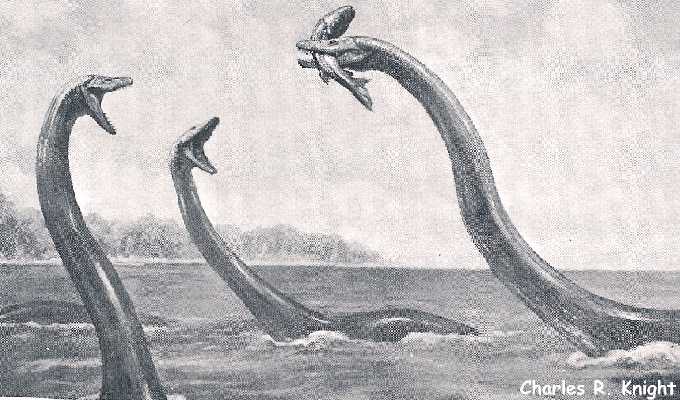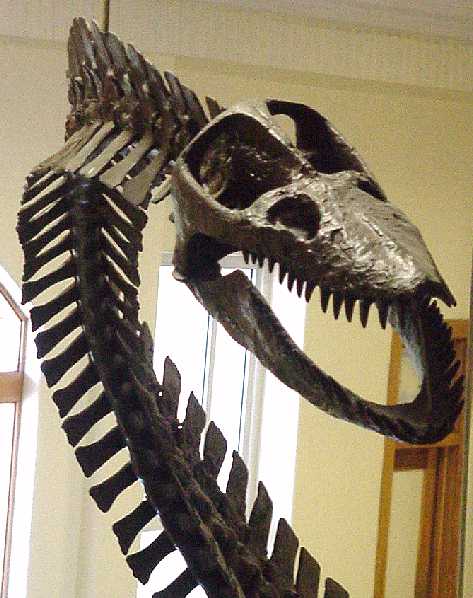 |
| Pilot Whale which presumably choked to death on large fish (Mahi mahi?). credit My Mataking - Eyes of the King |
Now to be specific I am not talking about bowing of the bones in the mandible to accept large pieces of food but specifically the stretchy area of integument that covers the open "V" shaped area medial to each side of the mandible and extends into the "throat" and which allows animals with even fixed mandibles to eat particularly large chunks of food. Such as this large nile crocodile below struggling to swallow an infant hippo (although amazing we never see if the croc really gets the hippo down) ?!? On a slight tangent I wonder if the smaller crocs surrounding this big boomer and flencing off bites from the hippo are females he mates with and hence displays tolerance towards.
Now as you are watching the video pay special attention to the throat region of the large male and see the distended gular pouch effectively increasing the entrance to the throat. The gular pouch works the same way in monitor lizards, pelicans, and cormorants (and probably most carnivorous theropods). And pelicans swallow some damn big stuff too.
 |
| H. Krisp. wiki commons |
Now traditionally the maximum parcel of food a plesiosaur is said to ingest corresponds to the diameter of the distance from each edge of the lower mandible. And if this dictum was followed for crocodiles it would produce a result of maximum food size ingested a lot smaller than what they actually accomplish. Same with monitor lizards, cormorants, and pelicans for that matter - even with flexible lower jaws. Now if plesiosaurs were synapsids, like the above unfortunate pilot whale, I would say that is a good proxy to determine maximum size of prey ingested. But being diapsids and being opportunistic carnivores lacking serrated teeth there is more than enough ecological and familial justification to infer a gular pouch in plesiosaurs. And this would substantially increase the maximum size of food ingested by plesiosaurs.
 |
| Styxosaurus credit Mike Everhart. used w/permission link |
 |
| Note the accurate degree of gate in the mouth Knight used for these Elasmosaurs |
Now, there are a number of marks against this; it was not collected by Cope but by Joseph Savage; it was scrappy and poorly preserved; and we don't have the mosasaur material anymore nor are we even sure it is Clidastes. And also Cope was the man, who just a few years earlier infamously got the head on the wrong end of Elasmosaurus to much embarrassment.
 |
| Edward Drinker Cope. 1869. Elasmosaurus incorrect end of tail depicted with head. |
From Cope's account from Joseph Savage (the collector): "the vertebral column of the Clidastes was found immediately below that of the Plesiosauroid and in a reversed position as though it had been swallowed by the latter or larger reptile."
Now here I should interject that the identity of Clidastes is not equivocal and Mike Everhart (Oceans of Kansas) is suspect due to Clidastes being nearly extinct during the deposition of the Pierre Shale (so it could have been any mosasaur), Cope did not collect it, and the general scrappy and incomplete nature of the specimens.
"The largest vertebrate of the Clidastes were about three quarters the length and one forth the diameter of those of the Plesiosauroid, and the animal must have furnished a large, or at least long, mouthful for it's captor."
This is not as alarming as it sounds with regard to the length of the vertebrate. Plesiosuars have short, almost fish like vertebrate. Mosasaurs, not having long necks and with a shorter tenure in the ocean than plesiosaurs have relatively longer vertebrae. But these skeletal dimensions might offer a test of whether or not an elasmosaur, even with a distensible gular pouch, could have swallowed a mosasaur of those dimensions. And if you were to pick a mosasaur that might have been small enough to have been swallowed you can do a lot worse than Clidastes. They generally top off at about 3-4 meters and the size of recently published Clidastes "pups" was about 2 feet/ .66 meters. It lacks the relatively deep chest of more advanced mosasaurs and is often described as harkening back to less derived aigailosaurs both in form and ecology. It was the most common mosasaur on the Gulf Coast, and with the exception of a find in Germany, did not penetrate very far north. It may have lacked the physiology for colder waters and lacked a blubber layer. It is very eel like.
 |
| Adult & neonate Clidastes. scale 1 meter. Field et al. 2015 |
At what point does it becomes more difficult to imagine how the mosasaur landed headfirst inside the torso of the elasmosaur than simply concluding it was actually swallowed? Also given the incomplete nature of preservation it is also possible that the mosasaur was partially dismembered prior to being swallowed.
Coming up for the next installment of Plesiosaur Machinations, I will look at the shark/ichthyosaur eating plesiosaurs of the Sundance Sea. I leave you with another pic of Styxosaurus highlighting the large area hypothetically filled by a gular pouch and enlarging the size of prey swallowed by plesiosaurs.
 |
| (c) Mike Everhart. used w.permission |
Cheers!! and don't forget to like antediluvian salad on facebook!!
Support me on Patreon.
Like antediluvian salad on facebook.
Watch me on Deviantart @NashD1.Subscribe to my youtube channel Duane Nash.
My other blog southlandbeaver.blogspot.





5 comments:
so just guess what a macropliosaur could engulf...
One other possibility is that the little mosasaur was scavenging the plesiosaur carcass. A larger predator may have take a chunk out of the plesiosaur or there was another soft spot that the little mosasaur burrowed into. Its greedy little self trying to get to the squishy bits farther inside and then it couldn't get out and drowned. Not terribly probable, but plausible.
I think we need a series similar to this for spinosaurs.
I have written a lot on spinosaurs and will do more so in the future. Time time time.....
Great read thankyouu
Post a Comment